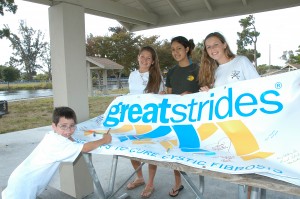By the Numbers
A Frank Look at Oil Prices and Why We’re All Insane
By Tom Copeland
We’re paying an insane amount of money at the gas station, and the fact that our country still imports 14.2 million barrels of crude oil a day according to this week’s report by the U.S. Energy Information Administration is frankly, well, insane too. Let’s explore the pervasive factors that drive the price of oil through the sunroofs of our cars and why we need a long-term plan to get us out of the foreign oil fields.
Why do gas prices swing so much?
1. Crude oil is a commodity that is bought and sold based on “futures” contracts. These financial investments were originally used to help producers get top dollar for their oil once it’s delivered by binding themselves and the buyer into a fair price. The problem is that hundreds of billions of dollars have been injected into this market by third-party investment speculators trying to turn a profit over the last 25 years, raising the stakes and creating volatility in the market.
2. With every major geographical, environmental, or political action or event comes some kind of effect on the price of gas. Most of our oil is imported from the Middle East, so anytime something happens over there, it manifests as fluctuating gas prices here.
Ultimately, that’s the reason for the oil gouging we’re seeing right here at home today. Since January, several oil-rich Middle Eastern countries have experienced upheaval from fed-up citizens looking to overthrow their wealthy dictators who have ruled in some cases for more than 30 years. Some of these efforts have been successful like in Tunisia and Egypt; some like Libya, have not been so successful. Most of our oil comes from Saudi Arabia, and if Saudi citizens launch a similar revolt, expect average gas prices to top $5 a gallon or more.
But these jubilant humanitarian achievements for the Tunisia and Egyptian people come with a price – a 38% increase in the price of a barrel of crude oil which at the time of this publications trades at $112.71. That translates into a national price average for a gallon of gas that is a whopping $.90 higher than it was this time last year. Investors drive up the demand (and therefore the price) of crude during times of Middle Eastern uncertainty, because the potential for an interruption in oil supply is great.
3. The devastating 9.0 magnitude earthquake that rocked the eastern seaboard of Japan on March 11th and the resulting tsunami that leveled coastal towns, left 5,500 and counting dead, and destroyed generators that power and protect several of the country’s nuclear power plants from meltdown. This event, unfortunately, could also continue to drive oil prices up.
4. Oil is the world’s only commodity that demonstrates such extreme price volatility, especially in the last decade. From 1999 to 2004, the swing in the price for a barrel of crude oil was never any more than $16. But from 2005 and beyond, the average swing from any one year to another was $52, and in 2008, the biggest swing came in at $115.
5. Worldwide demand for oil is at an all-time high with most of that demand coming from emerging, industrializing and fast-growing countries like India, Brazil, and China. The demand for oil is spiking here in the U.S. too, especially as we get closer to summer time.
The argument for our country to relieve our dependence on foreign oil is buried in numbers and economics. It costs Middle Eastern conglomerates who sell us our oil somewhere around $3.50-$5.00 to explore and produce a barrel of crude oil, yet at the time of this writing we’re paying $112.71 for it.
And as the price of the foreign oil we import continues to rise, Americans will continue to feel the sting, one that is powerful enough to potentially stymie economic recovery: higher prices at the pump mean less money for consumers to spend in other areas of their lives. The Fed warns that this could result in the real expected GDP growth for the U.S., expected to be somewhere just below 4% for 2011, getting sliced by as much as .5% to 1%.
They say insanity is doing the same thing over and over again, only allowing you to re-live the same undesired consequences. When will our country start recognizing the insanity of importing 88% of our oil from instable Middle Eastern producers, and finally begin working on some long-term plans to supply our energy to ourselves? I, for one, hope the answer is very, very soon.
Tom is a freelance web developer, professional content writer, and owner of Bullworthy, a web services firm. Tom helps small businesses create a powerful, branded presence on the web. Bullworthy specializes in building web assets using WordPress development from their West Palm Beach offices.




 Creature Feature
Creature Feature
 Cantankerously Yours
Cantankerously Yours




 The fight against cystic fibrosis (CF) has come a long way. Cystic fibrosis is a fatal genetic disease that affects the lungs and the pancreas.
The fight against cystic fibrosis (CF) has come a long way. Cystic fibrosis is a fatal genetic disease that affects the lungs and the pancreas. A typical day for a child suffering with CF is waking up and wearing a vibrating vest for about 45 minutes (to clear out breathing passages). A child with CF will do another 45 minute session later in the day. He or she will also need to take up to 65 different enzymes, so that food can be absorbed in the pancreas. In addition to this, a child with CF will take aerosol medicines through a nebulizer about twice a day. It’s a life that’s full of complications and challenges, yet it’s so much improved from just a generation ago.
A typical day for a child suffering with CF is waking up and wearing a vibrating vest for about 45 minutes (to clear out breathing passages). A child with CF will do another 45 minute session later in the day. He or she will also need to take up to 65 different enzymes, so that food can be absorbed in the pancreas. In addition to this, a child with CF will take aerosol medicines through a nebulizer about twice a day. It’s a life that’s full of complications and challenges, yet it’s so much improved from just a generation ago. dancing, a fire truck and more!
dancing, a fire truck and more! different career) she was selling insurance to Weiss, who was realizing that she had a long stretch ahead with three boys, all affected by cystic fibrosis. Karen Gray heard Weiss speak about three years ago. “She touched my heart,” says Gray. She saw an opening at the CFF organization for a special events coordinator shortly after that and knew that it would be a great fit for her, something she could believe in and make real progress at.
different career) she was selling insurance to Weiss, who was realizing that she had a long stretch ahead with three boys, all affected by cystic fibrosis. Karen Gray heard Weiss speak about three years ago. “She touched my heart,” says Gray. She saw an opening at the CFF organization for a special events coordinator shortly after that and knew that it would be a great fit for her, something she could believe in and make real progress at.




